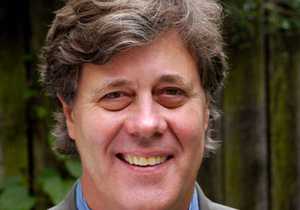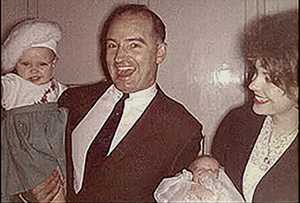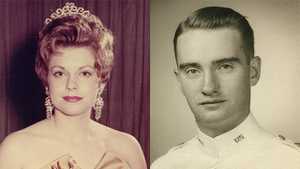A timeline of events leading up to and surrounding the Battle of Ong Thanh and the protests that broke out on the campus of the University of Wisconsin Madison in October of 1967.
1929
April 13: Terry Allen Jr. is born, the only son of Major General Terry Allen. The father will gain fame leading the Army's celebrated First Infantry Division during World War II.
1945
After the Japanese surrender ends World War II, Vietnamese leader Ho Chi Minh forms a provisional government and declares his country's independence from all colonial powers.
September 26: Lt. Col. Peter A. Dewey, an employee of the CIA's precursor agency, the Office of Strategic Services, is shot and killed on his way to the Saigon airport, becoming the first American casualty of the Vietnam War.
1946
Following a breakdown in negotiations, Ho Chi Minh's Vietminh forces begin a war to liberate themselves from their colonial ruler, France.
1949
Former Vietnamese emperor Bao Dai enters into the Elysée Agreement with the French, committing both sides to oppose Ho Chi Minh.
1950
As the Cold War escalates, American forces are deployed to Korea, and the United States also sends $15 million in aid, as well as some military advisors, to the French to assist in their war in Vietnam. The Communist governments of China and the Soviet Union likewise begin to arm the Vietminh.
1952
Terry Allen Jr. graduates from West Point, second-from-the-bottom in his class, and begins his military career.
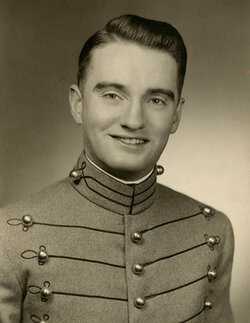
1954
May 7: After a 55-day siege, French forces surrender to the Vietminh at Dienbienphu. Following the French defeat, negotiations lead to a temporary partition of the country between the Democratic Republic of Vietnam in the north and the Republic of Vietnam in the south, an outcome that neither the United States nor Bao Dai accept.
1955
New Republic of Vietnam ruler Ngo Dihn Diem rejects the idea of nationwide elections that had been scheduled for 1956, and no elections occur. French forces leave Vietnam that year, and the American military takes over the training of South Vietnamese soldiers.
1957
The insurgency of those the Diem government dubs the Viet Cong" begins in South Vietnam, and within two years the North is sending assistance to the guerrillas along what becomes known as the Ho Chi Minh Trail.
1960
October: Terry Allen marries Jean Ponder, who at 18 is 14 years his junior. By the age of 22 she has given birth to three daughters, but Jean suffers from postpartum depression and feels isolated moving from place to place in Germany, where Terry is assigned.
November: John F. Kennedy is elected president. After taking office, Vice President Lyndon Johnson travels to Vietnam and affirms his support for Diem's increasingly autocratic government. Kennedy increases the number of American military advisors in Vietnam and forms the Green Berets, a Special Forces group trained to conduct counterinsurgency.
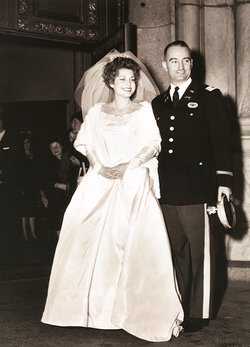
November: Diem, whose increasingly repressive measures have alienated Vietnamese Buddhists, is overthrown in a bloody coup approved by the United States. Later than month, President Kennedy is assassinated.
1964
August: After an alleged attack by the North Vietnamese on the U.S.S. Maddox, Congress overwhelmingly passes the Gulf of Tonkin resolution authorizing President Johnson to take "all necessary measures" in the region. Johnson describes the Tonkin resolution as "like grandmother's nightshirt. It covers everything."
November: Just days after the Viet Cong shell an American air base, Johnson wins a landslide election over Republican Barry Goldwater. Operating with both legislative and electoral mandates, Johnson will soon significantly increase America's military presence in Vietnam.
1965
March: Operation "Rolling Thunder," a U.S. bombing campaign against targets in North Vietnam, begins; although projected to be of limited duration, it will continue for three years. Johnson authorizes the use of napalm in Vietnam bombing runs. The first American combat forces arrive; by year's end, roughly 200,000 U.S. troops will be "in country."
April 1: Sociology department head William Sewell organizes a well-attended antiwar teach-in on the University of Wisconsin at Madison campus, reflecting his belief that the U.S. doesn't have "any business over there" in Vietnam. First attempted at the University of Michigan just a week earlier, the teach-in becomes a popular form of protest. Later in the month, 15,000 students demonstrate against the war in Washington; 35,000 antiwar protesters converge on the city in November. But war supporters also draw large crowds, including 25,000 at a D.C. rally in October.
1966
As antiwar protests grow, Johnson and American military leaders increase reliance on "search-and-destroy" missions in an effort to draw the Viet Cong into battles and inflict heavy casualties. But the Viet Cong prove difficult to pin down. By year's end, 6,000 American soldiers have died.
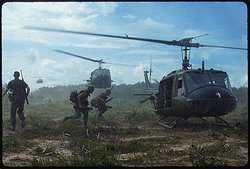
May 16: In a protest against changes to the draft policy that threaten some of their deferments, students stage the first "sit-in" at the University of Wisconsin, occupying an administration building peacefully for several days before a compromise is reached. Elated by the resolution, Soglin writes an effusive letter of thanks to the university president.
October: Horrified by the civilian casualties napalm has caused in Vietnam, student protesters begin targeting the military's only supplier, Dow Chemical. The first demonstrations occur this month in Detroit and Berkeley, and 43 more take place by March 1967.
1967
January: Ramparts magazine publishes photographs of Vietnamese children burned by napalm, spurring the involvement of Martin Luther King Jr., who will publicly denounce the war at a speech in New York in April.
February: Recruiters from Dow visit the Madison campus, where they are confronted by protesters bearing Ramparts photographs. The next day students, including Soglin, stage a sit-in at the university chancellor's offices, but the confrontation is defused when the chancellor uses his own money to bail out arrested protesters. In a subsequent faculty meeting, a proposal that would have barred Dow from recruiting on campus is defeated. Sewell votes in the affirmative.
Terry Allen is ordered to report to Vietnam. American troops there are having difficulty engaging the Viet Cong in decisive battles, and pressure from both political and military leadership to take more aggressive action is growing. During the year a number of officers within Allen's First Infantry Division are dismissed. One such dismissal leads to Allen's appointment that summer as commander of a battalion within the storied "Black Lions" regiment.
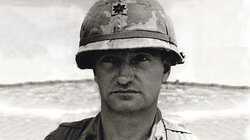
May: 70,000 supporters of the war march in New York City.
June: After receiving a "Dear John" letter from his wife announcing she no longer wants to be married to him, Terry Allen takes emergency leave and returns to El Paso, Texas. Jean Allen has had difficulty living the military spouse's life while Terry is in Vietnam, and she has also become disturbed by television images of the conflict. Challenging both the war and her husband, Jean begins an affair. Terry's visit home does not alter the situation, and the Allens prepare for a divorce.
Summer: William Sewell is appointed chancellor of the University of Wisconsin. Antiwar activists canvas the suburbs for support in what becomes known as "Vietnam Summer." Lieutenant Colonel Terry Allen assumes command of his Black Lions battalion, fully aware of the pressure to find and destroy the Viet Cong. American troop strength in Vietnam has grown to nearly 500,000.
September: Students arrive on campus and discover that Dow recruiters are scheduled to return in mid-October; more sit-ins are planned.
The Black Lions prepare to leave their base camp at Lai Khe in a search-and-destroy mission called Operation Shenandoah II. Their objective is the First Regiment of the Ninth Viet Cong Division, with an estimated strength of some 1500 men. The First Regiment's deputy commander is a man named Vo Minh Triet, who has been fighting those he considers foreign occupiers since the 1950s.
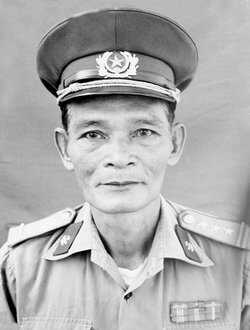
October 9: Elements of Allen's battalion engage in a firefight in the jungle north of Lai Khe, the first battle for many of the soldiers who have recently arrived in country.
October 11: The Cardinal, University of Wisconsin's student newspaper, prints a warning from the dean of students that any students who disrupt campus interviews will be subject to disciplinary action. Fearing prior restraint on their right to protest, Paul Soglin and other students file a lawsuit in federal court.
October 13: An ad hoc committee of students votes to proceed with the Dow protests.
October 15: The Viet Cong First Regiment arrives in the Black Lions area of operations, looking for rice. Their mission is to move to another sector, not to engage the Americans. No rice is found, so the unit digs in and waits.
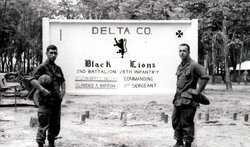
October 16: Two of Allen's companies skirmish with the First Regiment; one American soldier and several Viet Cong are killed. Confident of the enemy's position and facing pressure from superiors, Allen orders a frontal assault for the following day. Unlike past operations, this time he will accompany his men on the ground.
Meanwhile, Dow's corporate recruiter arrives in Madison. At a protesters' meeting that night, students agree that the major sit-in will occur on the morning of October 18, its aim to jam the campus building where Dow is recruiting and prevent any interviews from taking place.
October 17: Shortly after 8 a.m., Alpha and Delta Company of Allen's battalion leave their night camp and head out into the dense jungle. After a couple of hours, they are ambushed by the First Regiment, which outnumbers them roughly ten to one. Alpha Company, which had taken the lead, is virtually annihilated, and Delta comes under attack from three sides and sustains heavy casualties. The Americans and Viet Cong are fighting in such close quarters that the Black Lions cannot call in artillery support. As the battle rages for the next few hours, American losses mount. The First Regiment leaves the battlefield later that day, and the Americans return to recover their dead and wounded. Of the 142 men who marched into the jungle that morning, 64 have been killed, including Terry Allen.
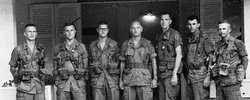
Meanwhile, the first day of anti-Dow protests takes place at the University of Wisconsin, but students do not try to disrupt the recruiting, for the most part staying outside the building where interviews are taking place. After a few hours, the protests end peacefully. The federal judge presiding over Soglin's lawsuit refuses to issue a temporary restraining order against the police or the university, but says he will hear arguments on the constitutionality of the university's regulations governing protests.
October 18: In Vietnam, the First Regiment leaves the area and heads north, while American units return to the battlefield to collect those bodies they were unable to retrieve the night before. Superior officers begin portraying the ambush as a victory that prevented Viet Cong units from moving towards Saigon. But as many of the enlisted men realize, in fact the South Vietnamese capital was never the First Regiment's objective, and Triet's men are moving in the opposite direction.
In Madison, students begin their protest at 10:30 a.m. and soon move into the hallway of the Commerce building, where Dow interviews are set to take place. The hallway is quickly jammed with demonstrators, and after trying unsuccessfully to arrest a few students, the university police chief requests assistance from Chancellor Sewell, who in turn summons the Madison police. This is their first involvement in a situation on campus, but the police chief has been expecting the call and has already assembled a team of 30 to respond. After a few hours of fruitless negotiation, the police, who have received no training in riot situations, storm the Commerce building and begin removing protesters by force. Soglin and many other students are beaten by police swinging their nightsticks, but protesters do not suffer the only casualties. In addition to the 47 students, 19 police officers are sent to the local hospital. As the officers force protesters into the plaza outside the Commerce building, tear gas is used for the first time. By 5:30 p.m. the last students leave the plaza, and the first violent antiwar protest on an American campus comes to an end. That evening at a mass meeting, students agree to boycott classes.
In El Paso, men in uniform deliver the news of Allen's death to his parents, wife, and three young daughters.
October 19: After a heated discussion, the University of Wisconsin faculty votes both to approve Sewell's actions during the Dow protest and cancel the company's last day of campus interviews.
October 21: An enormous antiwar protest draws more than 100,000 people to Washington, including a contingent from the University of Wisconsin. In Madison, two thousand students march to the Wisconsin State capital in what they term a "funeral procession" to protest police brutality. Meanwhile, in Vietnam, a memorial service is held at the Black Lions base camp in Lai Khe for the soldiers lost in the October 17 ambush. By early the next year, the American death toll will reach 25,000.
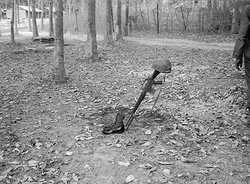
October 26: Chancellor Sewell testifies before a hearing at the state Capitol building into "the Riotous and Unlawful Activities" on the University of Wisconsin campus. Pressed by legislators looking for a crackdown on antiwar students and faculty, Sewell defends the rights of both groups.
At University of Wisconsin, more than 150 students sign up for subsequent interviews with Dow, a new record.
1968
January 30-31: Viet Cong and North Vietnamese forces launch the Tet offensive, a massive series of attacks across South Vietnam. Although the operation is a military disaster for the Viet Cong, it fuels antiwar sentiment in America and causes many to question whether the war can be won.
March: American forces kill some 200 civilians in the village of My Lai. Later that month, President Johnson announces that he will not seek re-election.
April: Paul Soglin is elected as one of Madison's aldermen, representing a district where many University of Wisconsin students live. Later that year, William Sewell resigns as chancellor and takes a sabbatical in New York. He subsequently returns to Madison and will continue his sociology work there for the next 30 years.
May: Peace Talks aimed at ending the war begin in Paris.
August: A police riot breaks out in the midst of antiwar protests at the Democratic National Convention in Chicago.
1969
New president Rochard Nixon begins a secret bombing of Viet Cong strongholds in Cambodia and also initiates a " Vietnamization" of the war, a policy which will lead to a gradual withdrawal of American military forces.
April: U.S. deaths in Vietnam surpass the roughly 33,000 lost in the Korean War.
October 15: An estimated two million protesters gather across the U.S. for the largest antiwar march in U.S. history.
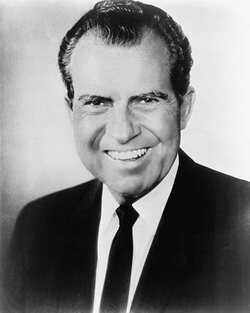
August: Antiwar protest at the University of Wisconsin turns violent again when a bomb destroys Sterling Hall, home of the Pentagon-sponsored Army Math Research Center. A physicist with no connections to the Army center is killed.
1973
A cease-fire agreement is reached in Paris. The last American combat troops leave Vietnam; roughly 58,000 have died in the course of the war. Former student protester Paul Soglin is elected mayor of Madison.




